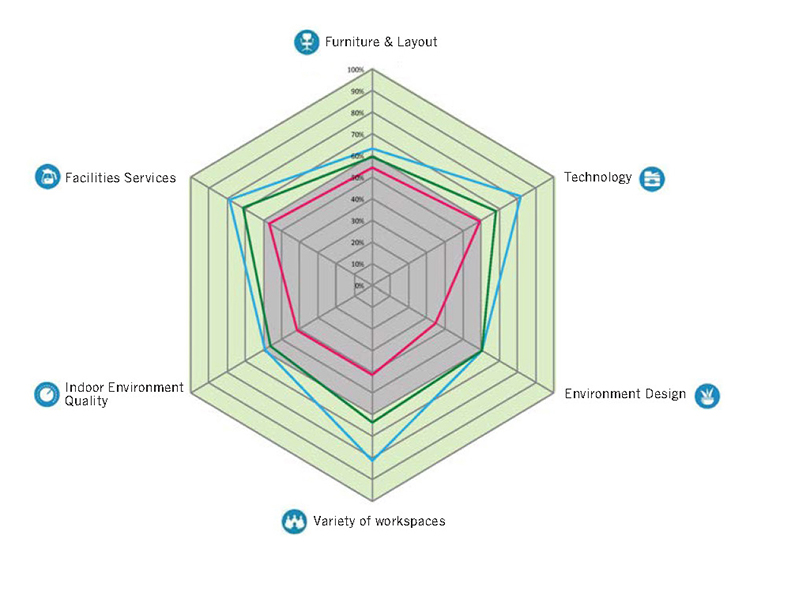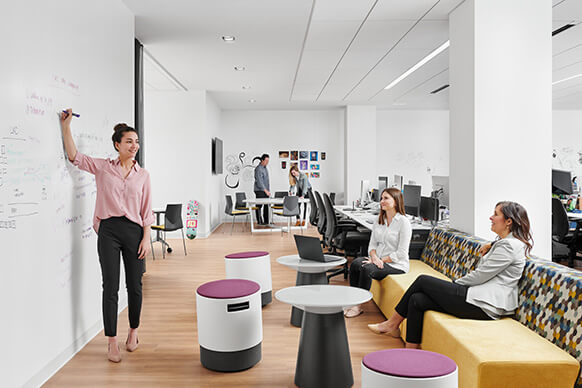“Good design is good business,” Thomas J. Watson famously declared in the early 70s. But while the link between design and performance has since been well established with products, only recently has the physical workplace environment garnered the same attention.
As workplace experts (not to mention people who work in offices), we understand the impact design has on how work is done: how productive we are and – as crucially – how engaged we are in it. We have been preaching “good design matters” for a long time, demonstrating the connection between the physical environment and employee satisfaction, individual and team performance, and an evolving organizational culture. Heads nod, but we are also met with raised eyebrows asking, “How do you know?”
We were able to ask this question of ourselves when redesigning four of our Perkins&Will offices. Faced with expiring leases, our Chicago, Minneapolis, and Seattle studios moved, while our New York office renovated, in 2016. Designing these four spaces challenged us to take bold steps to improve our workplace effectiveness. While each project had its own unique set of drivers, collectively we all strove to facilitate collaboration, enable choice, promote health and wellbeing, and optimize sustainability.
While the improvements were reward enough, we were thrilled to be awarded an Architectural Record Good Design is Good Business award for the rigor by which we evaluated our work. So how exactly did we establish the link between our designs and our business performance? We did the following:
-Issued Leesman’s Workplace effectiveness survey to employees in the four offices. These responses were measured against the Leesman Index’s more than 200,000 global responses across a range of industries, allowing us to understand how our employees felt about their environment (relative to respondents at other leading organizations).
- Interviewed office leaders to better understand how well their vision for the business manifested itself in the environment, and talked to marketing leads to track the office’s impact on the quality and quantity of prospective client engagements and successful pursuits.
- Reviewed operations data to gain insight into efficiency of the renovated offices against other Perkins&Will offices.
- Tracked technology investments allowing us to gauge the relationship between tools and workplace effectiveness.
- Measured our lighting and acoustical levels to determine possible impact on wellness and – by extension – productivity.
- Reviewed the program for each office allowing us to triangulate performance results against the allocation of a variety of space types.
- Evaluated our improvements to energy use, material health, and sustainability to draw connections to employee health, wellbeing, and productivity.
Gathering and codifying this data showed us first-hand how valuable this information is, and how easily accessible it is; many metrics are inherently tracked, and the rest are relatively easy to access.
Living in the Data Age, it’s a great time for clients who are curious about measuring project success against goals to determine workplace effectiveness. With our help, those willing to ask the questions can uncover rich insights about their employees that can help shape the design of their workplace. This deeper exploration to answer the “How do you know?” validates design as a business strategy, making its value understood as both an art and a science.


